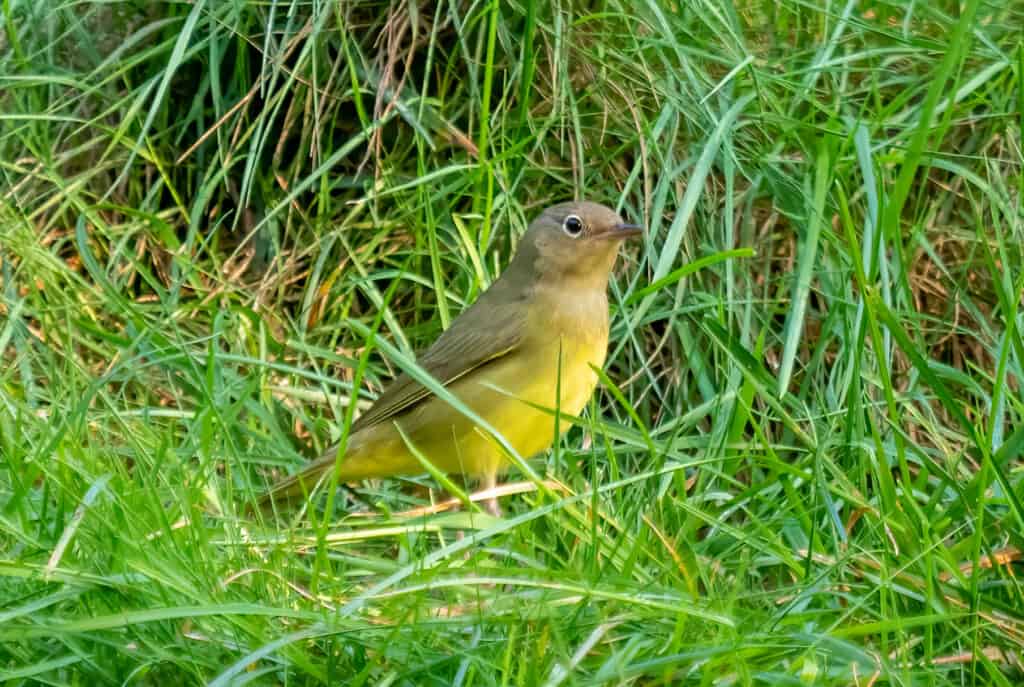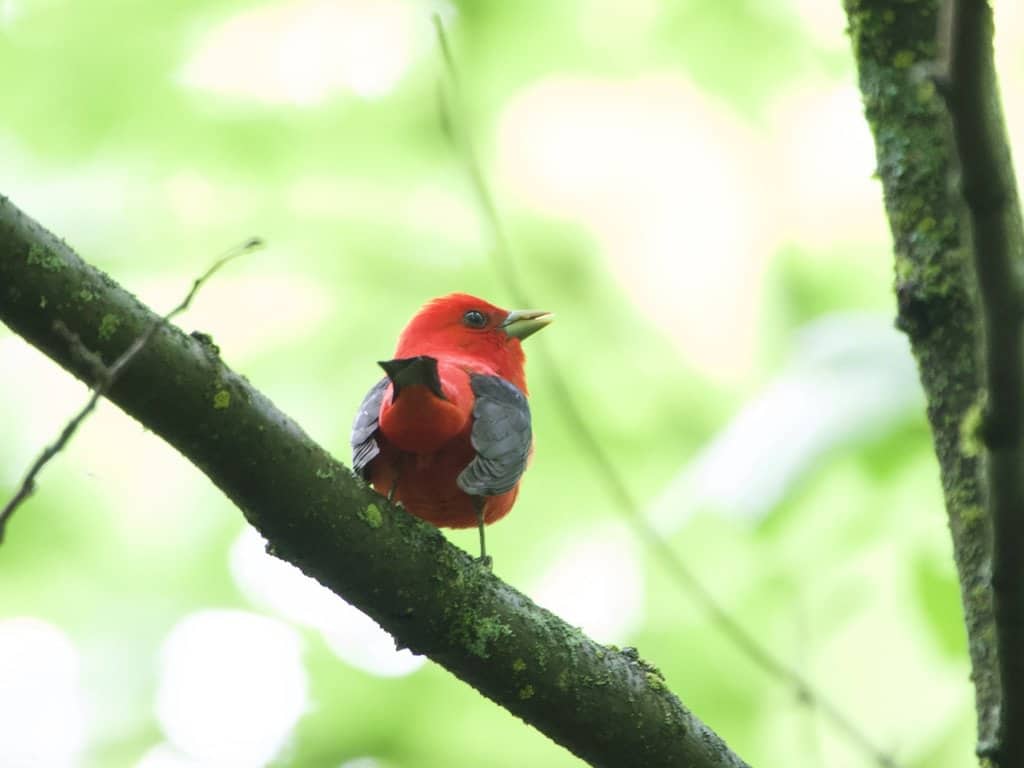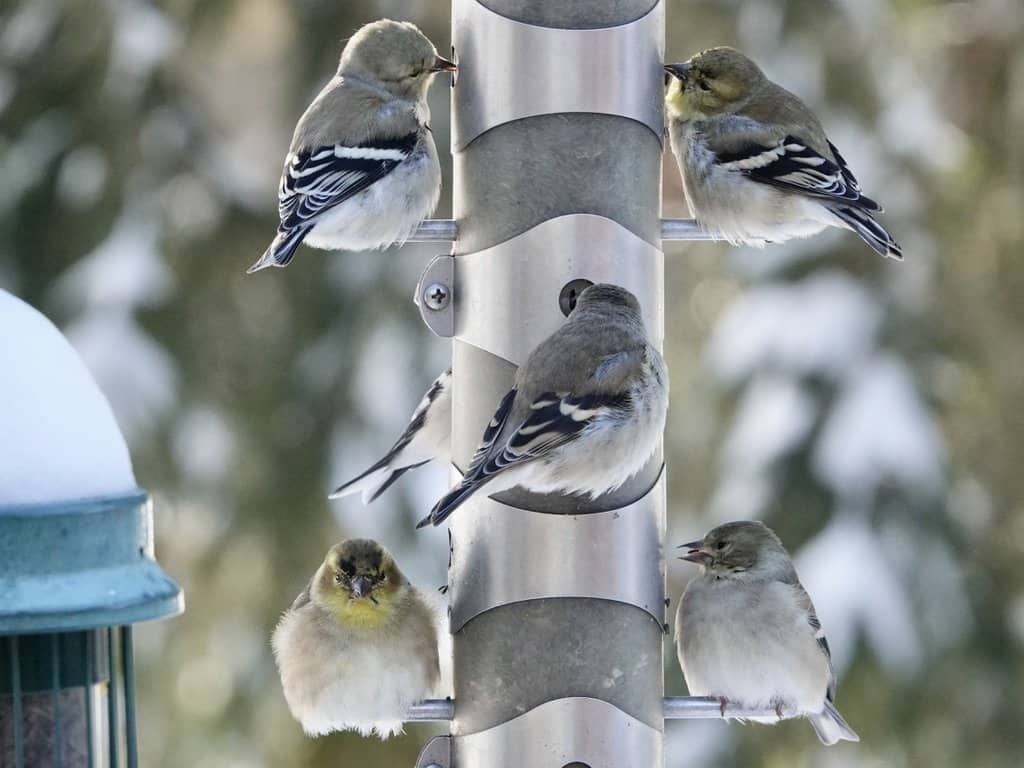Peterborough Examiner – February 2, 2024 – by Drew Monkman
Years ago, my wife Michelle and I were at Rondeau Provincial Park on Lake Erie to do some May birding with friends. I was very excited because a rare Connecticut Warbler had been turning up along one of the trails and we were determined to find it. Michelle, however, decided not to join us on our wild warbler chase but chose to just relax with her binoculars where we’d parked. When we returned empty handed an hour later, she was thrilled to tell us about all she’d seen by just sitting quietly, including a curious gray and yellow bird that walked – not hopped – across the parking lot. This was the Connecticut Warbler and we’d missed it!
Now, Michelle wouldn’t call herself a birder in the traditional sense but yet she loves birds and is a keen observer of differences between species, like the unusual way in which the Connecticut Warbler moves. She’s always telling me about interesting behaviours she’s witnessed at our feeders or nesting boxes. This raises the question of what constitutes birding? Clearly, our current definition is far too restrictive.

Traditional birding
I often hear people say, “I’m not really a birder.” Usually, these people are truly interested in birds – and often very knowledgeable – but don’t have the inclination or time to be out chasing down as many species as possible. Sometimes, constraints such as mobility or having young kids put limits on their birding, too. This perceived pressure to do birding in a certain way is a shame, especially at a time when bird populations are plummeting and we need much more public awareness of the myriad threats they face.
It’s a fact that traditional birding, which focuses nearly entirely on identification and compiling as big an outing list as possible, can be intense and maybe even intimidating to the uninitiated. People who are happy to just linger in one area and maybe focus more on bird behaviour – or wait and see what other species show up – may feel they don’t belong or, even worse, that they don’t really qualify as birders.
To be fair, however, I’ve noticed a change in the priorities and behaviours of even the most intense birders in recent years. This is especially true when they’re leading walks with people who are new to the hobby. There’s far more awareness of the needs and interests of everyone in the group. I think part of this can be explained by the much-needed inclusion movement that continues to spread across all sectors of modern society.

Slow birding
The question of what birding actually means is something that Vermont naturalist Bridget Butler has been thinking about. As much as she appreciates many aspects of traditional birding, she knows it’s not for everyone. She now champions what is called the “slow birding”, a kind of bird-watching that is more accessible to everybody.
Slow birding is an approach to connecting with birds and nature that moves the focus to all that inhabits a specific place, maybe your own backyard or neighbourhood. As the name suggests, it’s about slowing down and being in the moment with birds. In addition to simply identifying a bird and maybe learning its song, it means asking yourself, “How much deeper can I go and what behaviours can I notice?” It means being happy with the birds you DO see, instead of feeling frustrated by those you miss.
There’s a huge amount of satisfaction in knowing what birds can be easily found close to home, what other species are possible and how the mix of species and the bird chorus itself changes over the course of the year. The fact you can never be sure of what you might find only adds to the pleasure. Who knows, you might come across a beautiful Scarlet Tanager feeding quietly high in a backyard tree during spring migration. It all comes down to paying close attention.
It doesn’t take long to learn which species are most common in your local “patch”. And, with the help of the free Merlin app and its Sound ID feature, you’ll soon recognize the songs and calls you hear. Armed with this knowledge, anything new that turns up really catches your attention.
Simply focusing on the behaviour of birds coming to your feeder is a good starting point to slow birding. Take American Goldfinches. You may notice how one aggressive individual refuses to move from its feeder perch, driving away all the other goldfinches that try to have their turn. This is because a pecking order exists among goldfinches. Females with duller bills, for example, tend to give way to females with brighter bills.

Benefits of slow birding
Slow birding helps you develop a deeper connection to not only birds but also to the place you live. It shares much of the appeal of living locally, be it purchasing locally-grown food or enjoying local theatre. In an increasingly homogenized world, the emotional impulse to connect deeply with the richness and uniqueness of where we reside is stronger than ever. Likewise, seeing an unexpected bird in your yard or immediate area has more meaning and impact than seeing it elsewhere.
The benefits are personal, too. Slow birding presents an opportunity for a kind of mindfulness – the practice of being in the moment – as you engage quietly, deeply and intentionally with the birds and nature around you. Tuning into birds – and trying to tune out everything else – enhances our sense of wellbeing.
It’s especially satisfying to gain insight into what birds are telling us. Maybe it’s a flock of crows that are cawing non-stop as they fly about the top of a tree. When you wander over, you might discover there’s a hawk or owl perched on a branch that the crows are trying to drive away. Without this awareness, you would have probably ignored the mayhem.
Some activities to try
- Find a sit spot. This is simply an inviting, private place away from distractions where you can sit quietly and observe nature. It might be on your property or in a nearby park or greenspace. Try to spend 20 minutes there a few times a week. Pay close attention to the birds you see and hear. What behaviours do you notice? Visiting a sit spot regularly is wonderful for your mental health.
- Pay close attention to which birds are moving through your locality during migration. Most migration happens from mid-March to late May and then again from late August to early November.
- Try to find out which species are nesting and where the nests are located.
- Do your own local Big Year. This is a 12-month list of all the species you find in your yard or neighbourhood. Keep track of your sightings on the free eBird app. I see or hear upwards of 60 species annually in or from our Peterborough yard, while my friend Tim Dyson who lives on a large property outside of Warsaw records an average of 154. A Big Year can also be done as a family activity and even lead to some good-natured competition like who will see the first hummingbird.
- In a similar vein, you might also consider a Five Mile Radius (5MR) Big Year – a focus for birding that’s become quite popular. Much of it can be done on foot or on a bicycle. Not only is your carbon footprint much lighter, but you’ll find there’s so much to discover under your very nose. For more information, including how to print a 5 mile/8 kilometre radius map around your home, go to http://tinyurl.com/4rydwpcj
Slow birding reaffirms that there is no right or wrong way to be a birder. To learn more, visit Bridget Butler’s website at https://www.birddiva.com/ I also recommend reading Jon Young’s “What the Robin Knows: How Birds Reveal the Secrets of the Natural World” This natural history classic will teach you how to tune in to the vocalizations and behaviours of common birds and learn what they’re telling us. You might also enjoy “Slow Birding: The Art and Science of Enjoying Birds in Your Own Backyard” by Joan E. Strassman.